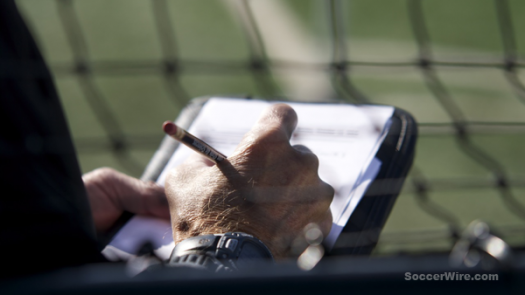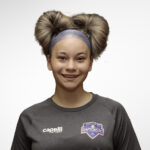LeBolt: Plot your course from green to tee
 In casual conversation, an avid golfer recently shared a gem with me that every competitor ought to put into play:
In casual conversation, an avid golfer recently shared a gem with me that every competitor ought to put into play:
“Look at the course from green to tee, rather than tee to green.”
In other words, figure out what you want to accomplish and then plan backwards.
+READ: LeBolt: Should your kid be a specialist, or general practitioner?
At Fit2Finish we get a lot of inquiries about fitness training to achieve goals. We’re usually asked, “How can I get from here (where I am dissatisfied with how I look, feel, perform) to there (where I am satisfied with how I look, feel, perform)?”
We think in chronological order, but we don’t need to. We can jump to the finish line and look back to the start. The best way to guaranteed to success is to figure out where that is and then calculate the best way to get there.
My golfing friend is really onto something. In fact, it is quite brilliant. Look at it from green to tee, not tee to green. Stand behind your objective and look backwards to see how you’re going to get here. (This works for puzzle mazes, too!) From there, the obstacles are put in perspective and ways around them are clear, perhaps because you know success is possible. It’s right in front of you!
But when we desert our spot at the finish to take our place at the start, things no longer look so clear.
- We take our directional cues from what’s around us rather than inside us.
- We settle for a general vicinity rather than a specific target that is closer and easier to hit.
 We see and fear the hazards and weather conditions we hadn’t anticipated.
We see and fear the hazards and weather conditions we hadn’t anticipated.- We default to force rather than finesse and take our eye off the ball.
- We rush and mis-hit.
- We wait and miss opportunity.
- We aim, rather than trust our bodies to do what we’ve practiced.
Only if we know where we’re headed can we chart a course to get there.
And for that to be true for the athlete, it must also be true for the system designed to develop the athlete to reach the finish line or stand atop the winner’s podium. If we really want to develop our players to their full potential, we need to plan from green to tee. With their goal right in front of us, we must design a course which details the steps a player needs to take to get there.
“Just have fun, and play your best” is terrific, but it’s not a strategy I can act on.
+READ: LeBolt: How setting the wrong goals leads to failure
To find a strategy that has achievement in mind, look no further than our school systems. They have detailed curricula of learning in each subject area for each year. There are standards meant to be reached and benchmarks designed to produce achievement every step of the way. This is updated regularly by people who really care about kids. They want them to succeed, expect them to achieve and measure their performance every step of the way. Not to call them out on falling behind, but to be sure they are getting the most from their efforts and reaching their potential.
 If we care about our kids success in sports, can we do any less?
If we care about our kids success in sports, can we do any less?
Where are our standards of learning?
- Broken down by age group to hand to each coach who signs on?
- Where are our benchmarks?
- How will we evaluate whether they have been achieved?
- What do we do if a particular coach or a particular age group is falling short of benchmarks?
- What do we require as training for our coaches?
- Is it fair to ask them to coach where standards are not set and methodologies and benchmarks are not in place?
- What is a measure of a coach’s success? Are we setting coaches up to succeed or fail?
- If they fall short of our arbitrary standards, whose fault is it?
If we really care about developing our kids through soccer, then the homepage of our club website should be very clear about its player development mission, and the steps it has taken to create an environment where this mission can be achieved. It should, at minimum state:
- What do we require of our coaches, parents and players?
- What are the benchmarks for each age group?
- What are the opportunities for kids who progress at different rates?
- Who is responsible for evaluating an athlete’s progress? a coach’s compliance? a coaching director’s effectiveness?
 The final question may be most important of all.
The final question may be most important of all.
Do we have a fair, impartial and objective system to decide if what we are doing is working?
Look at the website of your home club. Does it say what the club sets out to do? What does it say is your club’s goal for your athlete? How does it say it will get him or her there? Is it set up to achieve that?
If not, then we’re asking for conflict, and ultimately failure. Our kids and our families will be the losers.
I would love to hear from administrators and DOCs who have done this work for their clubs. Then, by all means, let’s share the standards that have helped kids reach their potential. We’re in the business of raising healthy, successful kids, just like the school system. It shouldn’t be a secret. Then success will truly speak for itself.
As the Cheshire cat says, “If you don’t know where you’re going, any road will get you there.”
But is every road safe and healthy to travel?
SOCCERWIRE MARKETPLACE
- visitRaleigh.com Showcase Series 2025, hosted by NCFC Youth
- OFFICIAL MANCHESTER CITY SOCCER CAMPS
- Wanted Licensed Youth Soccer Coach
- Join Official Elite Summer Soccer Camps with Europe’s Top Pro Clubs!
- The St. James FC Travel Staff Coach - North (Loudoun) & South (Fairfax)
- The St. James FC Girls Academy (GA) Head Coach - 2 teams
- The St James FC Boys Travel Tryouts
- OFFICIAL BAYERN MUNICH SUMMER CAMPS U.S.
- JOIN THE ALLIANCE!
- OFFICIAL FC BARCELONA CAMPS U.S.











